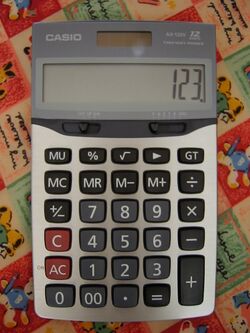Zero suppression
Zero suppression is the removal of redundant zeroes from a number. This can be done for storage, page or display space constraints or formatting reasons, such as making a letter more legible.[1][2][3]
Examples
- 00049823 → 49823
- 7.678600000 → 7.6786
- 0032.3231000 → 32.3231
- 2.45000×1010 → 2.45×1010
- 0.0045×1010 → 4.5×107
One must be careful; in physics and related disciplines, trailing zeros are used to indicate the precision of the number, as an error of ±1 in the last place is assumed. Examples:
- 4.5981 is 4.5981 ± 0.0001
- 4.59810 is 4.5981 ± 0.00001
- 4.598100 is 4.5981 ± 0.000001[citation needed]
Data compression
It is also a way to store a large array of numbers, where many of the entries are zero. By omitting the zeroes, and instead storing the indices along with the values of the non-zero items, less space may be used in total. It only makes sense if the extra space used for storing the indices (on average) is smaller than the space saved by not storing the zeroes. This is sometimes used in a sparse array.[citation needed]
Example:
- Original array: 0, 1, 0, 0, 2, 5, 0, 0, 0, 4, 0, 0, 0, 0, 0
- Pairs of index and data: {2,1}, {5,2}, {6,5}, {10,4}
See also
- Run-length encoding – Form of lossless data compression
- Zero code suppression
- Zero-suppressed decision diagram – Kind of binary decision diagram
References
- ↑ "Telecom Glossary 2000: Zero Suppression". U.S.: Institute for Telecommunication Sciences, NTIA. Archived from the original on 2008-09-25. https://web.archive.org/web/20080925110932/http://www.its.bldrdoc.gov/projects/devglossary/_zero_suppression.html.
- ↑ Parr, E. A. (1999). Industrial Control Handbook (3 ed.). Industrial Press, Inc.. p. 582. ISBN 978-0-8311-3085-5. https://books.google.com/books?id=zLwtngK3T1UC&pg=PA582.
- ↑ Grabowski, Ralph (2010). Using AutoCAD 2011. Autodesk Press. p. 648. ISBN 978-1-111-12514-1. https://books.google.com/books?id=-IH-oCWRJaQC&pg=PA648.
 |


